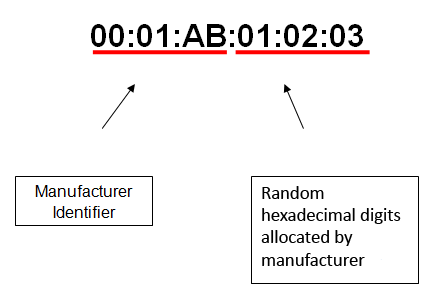What is a MAC address?
Media Access Control (MAC) addresses are required for all wifi-enabled devices to connect to a network. MAC addresses are unique to each device, and are assigned by the manufacturer.
What does this mean for the general public?
It is still best practice to record the serial numbers or other identifying numbers of all your devices. The ability to provide your MAC address for ALL wifi-enabled devices post theft is just another strategy NSW Police are implementing to locate stolen property and fight crime.
Other wifi-enabled devices can include, but are not limited to, digital SLR cameras, smart televisions, gaming consoles, portable music players, Hi Fi and e-book readers.
How do I retrieve my MAC address?
Your MAC address can be retrieved from any router you have used to access the internet; this includes at your home, work or a friend's house. There are many different models and brands of routers, and retrieving the MAC address can be different for each one; however, you can refer to your router's manual; search online for ‘how to' guides; or seek assistance from a person with IT knowledge.
By following the instructions, you will be able to access the log history for your router, and may be able to view recent MAC addresses for devices that have used the wifi network, as well as the date and time of the access.
What will a MAC address look like?
Network interfaces need to have a unique identifier so that no two devices can ever be seen as the same device on a network. Manufactures are allocated six hexadecimal characters (note, some large manufactures such as Apple and Samsung are allocated multiple sets), and set the remaining six characters themselves when producing the device.
The MAC address is broken down in the following manner:

Enhanced protection with reforms to the Pawnbrokers and Second-Hand Dealers Regulation
How did this come about?
The NSW Police Pawnbrokers Unit is always looking for ways to identify stolen property and reduce crime. A common issue identified with stolen property is that the owner has often not recorded any serial numbers or inscribed other identifying marks on their property.
Police have identified that the Media Access Control (MAC) address can be retrieved from the log history of any wifi router the victim may have accessed either at their work, home or friend's place.
This allows police to retrieve the unique MAC address of any stolen electronic wifi-enabled device, even after it has been stolen, or the serial numbers have been tampered with. This provides a means of locating the device and the possible arrest of an offender.
When are the new regulations enforceable?
From 1st June 2016, it will be compulsory for pawnbrokers and second-hand dealers to record MAC addresses for wifi-enabled smart phones, tablets or notebook computers.
What does the change in regulations mean for pawnbrokers and second-hand dealers?
The change in the Pawnbrokers and Second-Hand Dealers Regulation will make it compulsory for the MAC address to be recorded when a mobile phone, notebook computer or tablet is pawned or bought by the dealer. Information of the pawned item/s is then forwarded to the NSW Police Weblink System, and any stolen items can be matched with the victim's police report.
Mobile phones, notebook computers and tablets are the three most commonly stolen electronic devices, and are covered under the new regulation. However, in the near future, this may include all wifi-enabled enabled devices, including TVs and gaming consoles.

